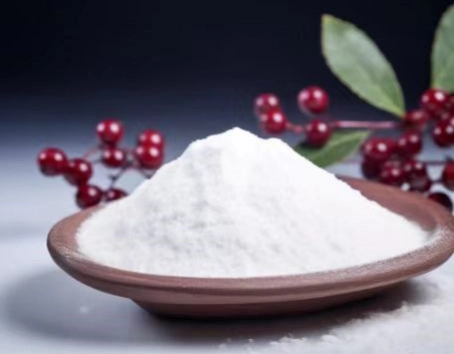Whitening ingredients and efficacy

Classification of whitening ingredients
From a functional point of view, various whitening ingredients can be divided into four categories:
1. Inhibiting melanin: that is, blocking whitening.
The same is the common whitening ingredients, such as kojic acid, arbutin, etc., they can inhibit the generation of melanin, with a strong light spot effect.
Disadvantages: It often needs to penetrate into the bottom of the skin to play its blocking role, which puts higher requirements on the product preparation.
2. Blocking melanin: that is, inhibiting melanin transport from melanocytes to keratinocytes, such as vitamin B3.
3. Fade melanin: that is, reduce whitening.
Blackening of the skin to produce spots is itself a process of skin oxidation. The vitamin C and its derivatives that we are familiar with are strong antioxidant small guards, which can restore the oxidized process, inhibit the oxidation reaction of melanin, and gradually whiten the skin.
Disadvantages: It is not a stable guard, it is easy to decompose in the air and lose efficacy.
4. Metabolic melanin: metabolic whitening.
Like fruit acid, salicylic acid A alcohol, etc., like peeling the egg shell, peeling the excessive cuticle of the skin, thereby taking the melanin away from the skin and making the skin new.
Disadvantages: This whitening method only removes the melanin on the surface of the skin, and melanin is present in the bottom of the skin, and constantly produces outwardly, so this method treats the symptoms rather than the root cause, but also needs to be used in combination with deep whitening products, and sensitive skin should be careful to use this exfoliating whitening method, combined with moisturizing and sunscreen.
8 effective whitening ingredients
Tartaric acid
An acid derived from fruit, of which glycolic acid derived from sugar cane is the best and most commonly used. The function is to remove the excessive keratinized stratum corneum, stimulate the growth of new cells, and help to remove the fine lines of the face, fade the epidermal pigment, and make the skin more soft, white, smooth and elastic.
arbutin
Arbutin, also known as myricetin and ursine leaf, is a component extracted from the leaves of the bear fruit. At a concentration that does not affect cell proliferation, arbutin can accelerate the decomposition and excretion of melanin, thereby reducing skin pigmentation, and it is relatively safe. Arbutin powder is a whitening raw material commonly used in high-end cosmetics in recent years, such as Patel’s microcrystalline whitening essence and Herborist New Seven whitening essence.
Vitamin C
One of the first representative additives used in whitening products. Its security is good, but its stability is poor. If not protected, it will quickly lose its activity in the cream. In order to stabilize it, various methods have been proposed, such as using the pectin in orange meat to maintain natural activity until it is destroyed and released when applied to the skin.
aloe
Aloe vera is used in whitening products because it has a good care effect on the skin after sunburn and reduces the skin darkening caused by ultraviolet stimulation. Aloe Vera is a surprising beauty plant discovered in the 1990s that can do almost everything – moisturize, protect against sun, remove freckles, remove wrinkles, whiten, prevent aging, and even care for hair. It is said that the use of fresh aloe vera juice was a secret formula of the Egyptian Queen Cleopatra.
Licorice, mulberry extract
Extracted from the root of licorice, it is commonly added to after sun care products to eliminate subtle inflammation on the skin after intense sun exposure. Licorice extract is safe. Mulberry extract is the latest whitening ingredient developed by the French, the effect is mild and effective.
Endothelin orange inhibitor
The uneven distribution of endothelin in the skin is the main cause of discoloration. Endothelin orange inhibitors enter the skin and can bind to melanin cell membrane receptors, rendering endothelin ineffective. Endothelin Orange resistance is a very new raw material that represents the latest level of whitening technology today.
5 kinds of whitening fruits
Kiwi fruit
Kiwi fruit is also called kiwi fruit, he is very rich in nutrition, containing vitamins, dietary fiber, oligosaccharides and other nutritional elements, not only can play a role in whitening the skin, which dietary fiber can also promote gastrointestinal peristalsis, soften stool, so as to play a slimming role.
bromeliad
If you want to make the skin whiten, you can also eat some pineapple, pineapple is rich in carbohydrates and vitamins, dietary fiber enzyme and carotene, calcium, phosphorus and iron and other nutrients, can supplement the skin needs nutrients, fiber can also moisten bowel, help protein decomposition.
tomato
Small tomatoes contain minerals, vitamins, carbohydrates, organic acids, proteins, can play a role in antioxidant, anti-aging, help digestion, so it is very good for skin care and maintain the body.
Apple
Apple can play a whitening, moisturizing, freckle, acne, balance the role of oil, eat one or two apples a day, which can make pores smooth, red face. In addition to the mild nature of the apple, you can also cut the face as a mask to use.
lemon
Lemon rich in vitamin c can promote skin metabolism, play a role in delaying skin aging, fade spots, make the skin white, delicate and shiny. You can usually eat lemons, you can also use lemons to soak water to drink.
Backvita
